Currently, most people associate the subject of forensic dentistry primarily with the possibility of identifying a person by odontological status and the analysis of bite marks. These practical tasks are actually the most common in the practice of a forensic dentist, however, besides them, there are other aspects of the industry that are just as important, but perhaps less known. These include analyzing the severity of injuries to the maxillofacial area, determining the age of living and dead people, examining dental signs of child abuse, assessing and investigating medical errors, and cases of dental health insurance fraud.
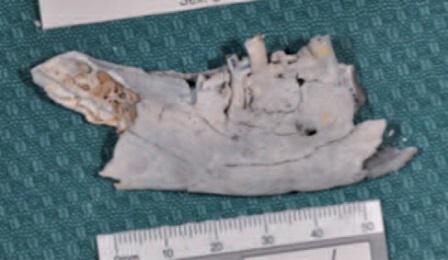
Forensic dentistry is inherently an integral part of medical and legal relations. Forensic dentists, who, in cases of litigation, are solely responsible for interpreting the results of a dental status examination, like any other specialist, need an appropriate level of education, qualifications and continuous professional development. Courts and legal institutions during proceedings require the argumentation of all conclusions and conclusions based on the actual data obtained, therefore, in addition to legal knowledge, the dentist must be well acquainted with the anatomy of the facial skeleton in terms of the structure and mechanisms of the formation of possible traumatic injuries. Understanding the mechanisms of bite marks formation during abuse, trauma in cases of sexual abuse, and specific injuries during child abuse are essential in the practice of a forensic odontologist. An equally important role is played by the skills of determining the age of a person using various methods. Finally, knowledge of personal identification methods, as well as the principles, protocols and procedures for their implementation in cases of mass disasters, taking into account ethical standards, is a key aspect in the work of a forensic odontologist. Examination of corpses for the purpose of identification is related to existing human rights, including in the investigation of war crimes, therefore, such a procedure requires a specific approach. The above proves that knowledge of the anatomy of the craniofacial region in general and, in particular, the anatomy of the teeth, aspects of the development of the dentition and bones of the skeleton, as well as the ability to adequately interpret injuries with the formation of appropriate expert opinions, is nothing more than the basic principles of forensic dental examination. . In addition, it is necessary to have a good understanding of the legislation both in the field of practical dentistry and in the criminal law system. Since most issues in forensic dentistry are related to the identification of unknown deceased persons, most of the discussion in this article will focus on this aspect.
Honoring the memory of the dead is one of the basic principles of most world communities. The degree of public attention to the issue of honor and memory of the dead varies quite a lot in different countries of the world, but, in essence, each person hopes that his or her remains after death will, in the end, be treated with due respect. This attitude includes the process of identification, through which relatives and friends of the deceased can properly treat the remains of a person and provide an appropriate burial ceremony, and in the future visit the place of burial at any time of their own free will. The authorities of many countries provide a number of guarantees regarding the mandatory identification of an individual before burial or cremation of the body. The burial of the remains without identification is conflicting with respect to all generally accepted religious, cultural and ethical systems of values and implies a nihilistic attitude towards a person's life without respect for the fact of his death and without a series of mourning ceremonies. William Gladstone, Prime Minister of Great Britain in the mid-1800s, stated this fact in the following way: “Show me how a people cares for their dead, and I will be able to determine with mathematical precision the mercy of this people, their compliance with high moral ideals and respect to the laws of his land.” Hal Hallenstein, as Victorian State Coroner from 1986 to 1994, defined the importance of identification of a person with the following thesis: “It is a sign of our civilization, and the death and burial of a person who may have lived among us, without establishing his name, is a direct insult to that, humiliation and failure to fulfill our direct obligations.” The importance of identifying the dead is also enshrined in the UK Coroners Act 2008 (Section 67), which states that “the coroner who investigates the death of a person must determine the identity of the deceased, as well as the cause of death, as well as related circumstances”.
A positive result of identification of the deceased person not only satisfies ethical principles, but also helps to resolve many legal issues related to the death of a person, for example, regarding inheritance and insurance. If the deceased remains unidentified, then technically he or she cannot be considered dead for several more years, thus creating a number of problems for the family, both moral and financial. Identification of the identity of living and dead people is possible using various scientific (and in some cases non-scientific) methods. Forensic experts, representatives of the forensic bureau, law enforcement and investigative agencies each use their own set of skills and methods to resolve issues that arise during the identification process. The most common method used in the work of all jurisdictions is undoubtedly the visual identification of the body by a relative or close friend. Questions regarding the accuracy of such identification, taking into account the possibility of error, especially in cases of mass catastrophes, as a result of which the deceased may receive a volumetric facial injury, are still the subject of many discussions. But the fact remains, and from a scientific point of view, visual recognition is not proof of identity, but only suggests the identity of a person.
Identification theory
The methods used to carry out personal identification can be divided into two broad categories. The first of these includes those methods that involve presumptive (preliminary) identification, for example, using circumstantial evidence, things found near the body of the deceased, or using visual identification. These methods are characterized by a high degree of subjectivity, and the end result of their use depends more on the identifiers and their interpretation of the data obtained, and not on specific identification features. Therefore, during the execution of such procedures, the data obtained may be erroneous. Therefore, such identification features are characterized as secondary. The second category of methods is based on the precise scientific analysis of identification features that are an integral part of the body, such as dental restorations, fingerprints, DNA or medical records – they are also primary identification features. Methods for the analysis of primary identification signs involve not only their objective assessment, but also the comparison of intravital and post-mortem signs through quantitative and qualitative comparison, therefore, the data obtained is difficult or even impossible to falsify.
Among all scientific methods, the molecular biological approach is the only one that can provide a mathematically reasoned quantitative degree of confidence regarding the compliance of a particular pair of identification characteristics (including dental ones). Although it also depends to some extent on the subjective opinion of experts and a specific methodology, which as a result may initiate the emergence of additional questions during trials, when the jury does not have a deep understanding of the methods used in the formation of an expert opinion.
Problems may even arise due to the fact that the identity criterion has not yet been precisely unified, namely, what characteristics and in what quantity are necessary in order to ensure a positive identification result. The presence of contradictory features excludes the possibility of one hundred percent identification. The possibility of simple matches occurring within a population is common, which does not allow for a final positive identification result, while at the same time even a few characteristics with a rare frequency of occurrence can provide full confidence in the match of the assumed and identifiable person. An example is the fact that amalgam fillings are registered according to medical records in each first molar. Is this evidence sufficient to confirm identity? Definitely not, since many people may have a similar dental status. If, however, we have ante-mortem radiographs of these restorations that help to determine their exact shape, size and topography within each tooth, and they correspond exactly to the same post-mortem radiograph data, then it is rather difficult to dispute a positive identification result in this case. However, it is not possible to quantify the agreement of data in such situations, as well as the numerical level of the probability of agreement or the percentage of confidence in it. Sometimes, due to the insufficient number of facts, it is necessary to compare all the teeth in order to be able to talk about at least some kind of coincidence. In other cases, a single tooth with an uncharacteristic or special restoration is sufficient for identification. Forensic experts have been working on the development of methods for quantifying comparability and coincidences for a long time, but a sufficiently reliable algorithm has not yet been developed, since it is quite difficult to completely eliminate the subjectivity factor.
Before the advent and implementation of scientific methods in the course of personal identification, the only real option for identifying relatives and friends was his visual identification, the results of which had to make a decision whether this person was the right person or not. At first glance, identification by visual identification is quite simple, but on the condition that the deceased has intact facial tissues. We can all recognize people we know by their facial features and mannerisms, even in poor lighting conditions or even when the lighting angle is rather uncharacteristic. This fact has been proven by the results of many studies concerning the identification of living people using CCTV cameras. In this case, why is there such a high probability of erroneous identification during visual identification of a deceased person, even without damage to the tissues of the maxillofacial apparatus? The process of visual recognition is difficult due to the uniqueness of the appearance of the deceased person while still alive. After death, the individual loses his usual facial expression, the characteristic appearance becomes different due to post-mortem changes, and simply differs from what he was during life. The initial signs of decomposition may go unnoticed for some time, but inevitably progress over time. And if this is supplemented with a state of stress and mental trauma that a close person or friend (he is an identifier in this case) receives at the sight of a dead body, then it becomes clear why the prevalence of errors is so high. This is aggravated by the fact that in the process of visual identification, the identifier does not determine the identity of the person, but only confirms the correspondence that the investigating authorities formed before it.
Identification methods
Visual recognition, despite the lack of scientific validity and the prevalence of errors, remains one of the main methods used in practice to achieve a positive identification result. In cases where visual identification is not possible (usually due to trauma, combustion, decomposition, or mass loss of life as a result of a single incident), forensic experts can use a number of more scientifically reasoned approaches to determine the identity, including the method of molecular biological identification, comparison of medical documentation data, fingerprint analysis, comparison of dental status characteristics with dental records.
DNA profiles are encrypted with a set of numbers that reflect the personality's DNA palette. These profiles can be used as identification criteria. Although 99.9% of human DNA sequences are identical for all people, there are enough DNA loci that differ in all individuals, unless they are identical twins. The DNA fingerprinting method uses repeating sequences that vary greatly as identification evidence. They are called loci with a varying number of tandem repeats, or tandem repeats with a variable number of links (VNTRs – variable number of tandem repeats), among which short tandem repeats are especially important. VNTR loci are very similar among relatives, and very different between two unrelated individuals. In situations where it is not possible to analyze a complete nuclear DNA profile, such as when examining ancient or highly degraded remains, mitochondrial DNA analysis is performed, although the latter method is less accurate. DNA identification is based on a comparison of a living sample (reference) with a post-mortem one, and involves both direct comparison with the DNA of the deceased (for example, DNA testing in blood samples according to Guthrie), and comparison with the DNA of relatives (parents, children, brothers or sisters) followed by an expert opinion. The conclusions of a molecular biological study are expressed in terms of the degree of probability of coincidence, thus, from a scientific point of view, it is possible to obtain a quantitative criterion for the comparability of samples. However, when using any of the DNA fingerprinting techniques, one cannot rely on them alone if other factors in the case raise clear doubts about the identity of the deceased during the investigative process. Contamination of DNA samples during their secondary transfer is the main cause of incorrect analysis of DNA profiles and raises doubts about the purity and reliability of the sample during their analysis.
Identification using fingerprints (traces of comb skin) is based on the study of intravital prints taken previously by the authorities (copies) or prints from objects that the deceased or missing person may have touched. Fingerprint identification can be carried out by an expert or an expert system that determines whether the resulting ridged skin impressions (samples) can come from the same finger or palm (foot or big toe). The accuracy of this method has been challenged many times by academics, the judiciary and the media. While the use of fingerprints was a clear advance at an early stage in the development of anthropometric identification systems, the subjective nature of the assessment of the conformity of fingerprints (especially in cases of incomplete or hidden traces), despite a very low error rate, has become a subject of discussion not in favor of innovation. .
The use of medical documentation data in the course of identification is justified in cases of a sufficient amount of intravital data on a unique iatrogenic intervention or disease. Examples of the use of this approach are the discovery of pacemakers or hip prostheses, which are engraved with registration serial numbers. They may be comparable to surgical records.
Dental identification
In cases where well-completed intravital dental documentation is available, it can simply be compared with the results of a post-mortem dental status examination – then the identification process is quite simple (photo 1). But in many cases, such a simple scheme does not work. Often intravital dental data in the patient's card is not fully entered, or many years ago, or there are simply no intravital radiographs. If we add to this the problem of examining fragmented remains and damage to the dentoalveolar apparatus under the influence of fire or other traumatic factor, in such cases it is quite difficult to achieve a positive identification result (photo 2a-c). In addition, it is not easy to achieve the same exposure angle when taking a post-mortem radiograph in accordance with an intravital radiograph. Therefore, the forensic dentist must be armed not only with a deep knowledge of the subject and understanding of all possible techniques, but also requires a certain level of experience and training in the implementation of appropriate approaches.
Photo 1: Comparison of intravital (AM-antemortem) and postmortem ( PM-postmortmem) radiographs are a possible option for achieving positive identification of a person.
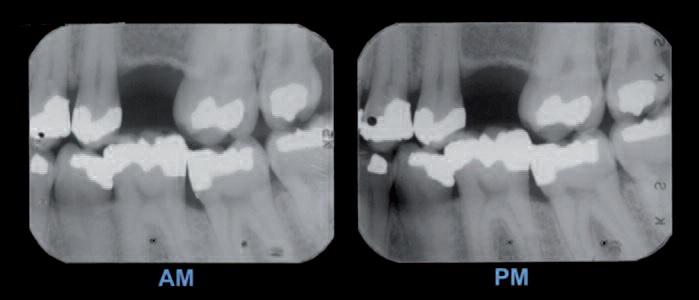
< p> Photo 2a-c: A more complex case of identifying the remains of the deceased. In this case, a dentist cannot do without professional knowledge. =”Forensic dentistry: more than just identification2″ />

< p>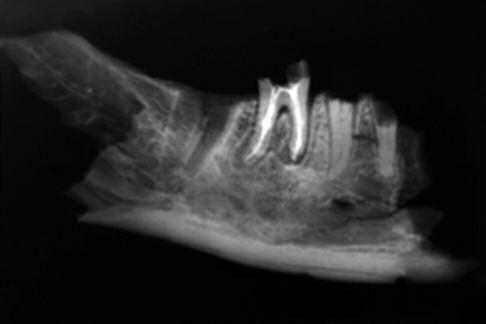
Personal identification by comparison of dental records is similar to fingerprint analysis, which, as described above, is not without an element of subjectivity in the process of comparison and interpretation. It is much easier for a jury to understand the discrepancy between compared dental data than it is to assess the degree or strength of matching of identical data. With ante-mortem and post-mortem X-rays, it is easy to determine the presence of restorations that will later have to be compared. In contrast to the minimalistic nature of the whorls and whorls of fingerprints, which are quite difficult to match, the evaluation of the results of comparison of dental radiographs is so obvious that anyone can determine whether these images belong to the same person or not.
< strong>Other aspects
In addition to cases requiring personal identification, forensic odontologists are involved in various cases regarding the consideration of many more medico-legal aspects, as already mentioned in the introduction. Notable among these are the analysis of bite marks, which includes an assessment of skin damage at the site of an injury caused by a person's teeth. This area of forensic practice is fraught with difficulties due to the highly subjective nature of expert opinions, often based on personal opinion, and which are not scientifically substantiated. There are many problems associated with the interpretation of bite marks, but this aspect is so broad that it is beyond the scope of this article.
Analysis and evaluation of injuries of the craniofacial region is a developing segment of forensic science and practice and includes the study of the dental status of living and dead persons, the formulation of expert opinions with an accurate description of the anatomical components of the injured area (photo 3), assessment of the degree of damage (mild, moderate, severe), as well as determining the direction of the acting traumatic forces. Sometimes it is possible to determine the exact nature of the traumatic object used, but the lack of unique characteristics in such cases greatly complicates the process of interpreting bodily injuries. This area of forensic dentistry requires a thorough knowledge of the anatomy of the craniofacial region, bone biomechanics and characteristic changes in anatomical structures depending on various degrees and vectors of applied forces.
Photo 3: An example of an injury to the maxillofacial region in the case murders. An accurate description of the injury can be extremely important in these cases. ” alt=”Forensic dentistry: more than just identification5″ />
Age determination has always been one of the mandatory tasks of a forensic odontologist, and has traditionally been based on the interpretation of different periods of tooth development and comparison of individual data with published reference standards (Figure 4). The principles of most methods for determining age by dental status are based on the age-differentiated development of the bite of a child under 15 years of age. After a given age, the interpretation of the criteria for the development of the dentoalveolar system is reduced only to registering the features of changes in the third molar, but this tooth, as you know, is quite variable in its development. Recently, there has been more and more discussion of the problem of the discrepancy between previously published standards for the development of teeth, which is due to the fact that they were developed many years ago, and therefore have little in common with the modern population in terms of historical progress and geographical migration. Significant work is currently underway to address this issue, it is aimed at the formation of new data sets for determining the age of the population of the entire globe.
Photo 4: Age determination using standard satin techniques is one of the cases where a dentist can help in the identification process or narrow down the search criteria for a missing person in cases of unknown body remains.

Odontologists are also exploring the possibility of more accurate determination of the age of persons over 18 years of age. This problem is solved by a multifactorial approach, taking into account the degrees of development of the third molar and other features of the development of the skeletal system, the combination of which makes it possible to obtain the result closest to real indicators (photo 5a-c). In light of the growing need to determine the legal status of immigrants, asylum seekers, child victims of human trafficking, underage combatants, and victims of sexual violence in developing countries, age determination becomes a particularly important task in the absence of evidentiary documentation.
Photo 5a-c: Using the characteristics of several anatomical regions to determine the age of adolescent personalities. In this case, the third molar, the medial epiphysis of the clavicle, and the sphenooccipital synchondrosis are represented – all structures are useful indicators for determining age at the end of adolescence in human development.

< p>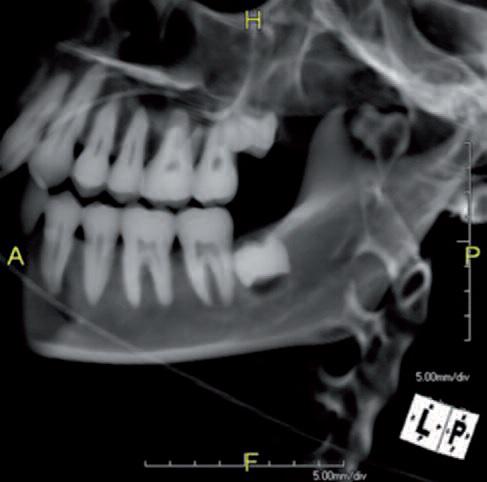
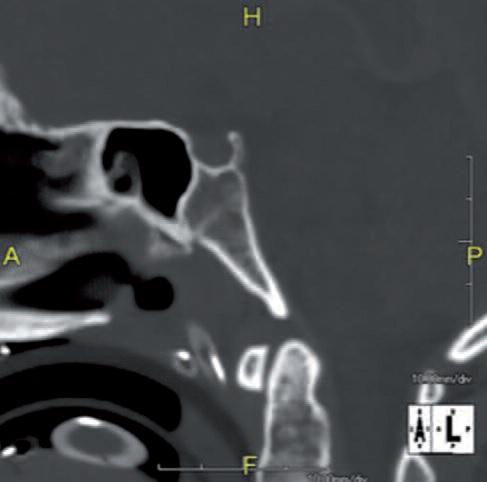 < /p>
< /p>
It has been proven that in more than half of all cases of child abuse, the fact of a craniofacial injury is recorded, which subsequently leads to problems with nutrition and communication. Forensic dentists are rarely involved in such complex criminal cases, but they nonetheless play an important role in describing and evaluating trauma, as well as helping to develop causal relationships. All principles of expert analysis of craniofacial trauma in adults are similar to those for children, which, in addition, take into account the process of development of the anatomical structures of the child's dentition and the accompanying biomechanical features of the facial skeleton.
Cases of dental malpractice and investigations into dental insurance fraud schemes are gaining increasing attention, both because of increased public awareness of the dentist's duties and responsibilities to patients, and because of the controversial nature of today's fast-paced society. . To analyze such aspects, the odontologist needs a thorough knowledge of the various laws relating to dental practice, professional codes of conduct and must have the latest information regarding treatment conditions. In addition, dentists require continuous improvement of their skills in registering medico-legal criteria for dental treatment.
Conclusions
Forensic dentistry is a scientific and practical branch that provides a quick and relatively cost-effective identification of the identity of the deceased, provided that correct intravital dental records are available. In countries such as Australia, iatrogenic dental records laws help regulate the quality of dental records that can be used when needed.
In other countries, the situation is the opposite, so the identification of the dead by dental status there is a serious and ongoing problem for both the government and humanitarian organizations. Good dental record keeping is not only useful for litigation, it also tends to improve the quality of services provided by the healthcare system and, as a result, improves the efficiency of patient care. That is why teaching dentists how to properly fill in dental cards should become one of the prerogatives in their education system. The advantage of correctly completed reports is pragmatically argued even on the basis of recent incidents of mass deaths, such as the Black Saturday bushfires in the UK, where, despite the availability of all conditions for DNA identification, more than half of all victims were identified thanks to data of dental documentation.
The scope of forensic dentistry is expanding significantly beyond the practical segment of identification, including a number of activities where dental practice and theory intersect with the letter of the law. To be a competent specialist in this field requires not only a complete understanding of the theoretical provisions and methods of odontology, but also a certain amount of knowledge and experience in the field of forensic medicine, law, pathological anatomy, molecular biology and anthropology. A forensic odontologist in his practice encounters the need to use the knowledge of the above disciplines in various scenarios of criminal cases. In addition, in order for the odontologist to understand how he can best contribute to the investigation, he should take into account all the possibilities and limitations of the methods of these branches of science.
Author: Richard Bassed, is a senior forensic odontologist and Head of Human Identification Services at the Victorian Institute of Forensic Medicine in Melbourne in Australia
